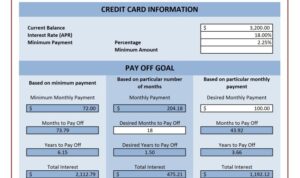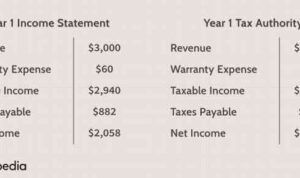Dive into the realm of retirement accounts where financial planning meets future security. Get ready to navigate through the maze of options and uncover the key differences that can shape your retirement savings journey.
In this article, we’ll break down the various types of retirement accounts available, compare their benefits and limitations, and explore the eligibility criteria for each. So, buckle up as we embark on this informative ride!
Types of Retirement Accounts

Retirement accounts are essential tools for saving and investing for your future. There are several types of retirement accounts available, each with its own unique features and benefits. Let’s explore the key characteristics of traditional IRAs, Roth IRAs, 401(k) accounts, and pension plans.
Traditional IRAs
Traditional IRAs are individual retirement accounts that offer tax-deferred growth on your investments. Contributions may be tax-deductible, but withdrawals are taxed as ordinary income. These accounts are ideal for individuals who expect to be in a lower tax bracket during retirement.
Roth IRAs
Roth IRAs provide tax-free growth on your investments, as contributions are made with after-tax dollars. Qualified withdrawals in retirement are tax-free, making Roth IRAs a great option for those who anticipate being in a higher tax bracket in the future.
401(k) Accounts
401(k) accounts are employer-sponsored retirement plans that allow employees to save for retirement through pre-tax contributions. Some employers match a portion of the employee’s contributions, providing an additional incentive to save. Withdrawals in retirement are taxed as ordinary income.
Pension Plans
Pension plans are retirement accounts funded by employers, which provide a guaranteed income in retirement. These plans are becoming less common, but they offer the security of a fixed income stream during retirement.
Understanding the eligibility criteria for each type of retirement account is crucial. Make sure to consult with a financial advisor to determine which account(s) best suit your financial goals and needs.
Traditional IRAs
Traditional IRAs are retirement savings accounts that allow individuals to contribute pre-tax income, which can grow tax-deferred until withdrawal during retirement. Contributions to a traditional IRA may be tax-deductible, depending on income level and participation in an employer-sponsored retirement plan.
How Traditional IRAs Work and Tax Implications
- Contributions: Individuals can contribute up to a certain annual limit set by the IRS.
- Deductions: Contributions to a traditional IRA may be tax-deductible, reducing taxable income for the year.
- Withdrawals: Withdrawals from a traditional IRA are taxed as ordinary income in retirement.
Penalties for Early Withdrawals
- Individuals who withdraw funds from a traditional IRA before age 59 ½ may face a 10% early withdrawal penalty.
- Exceptions to the penalty include first-time home purchases, higher education expenses, and certain medical expenses.
Required Minimum Distributions (RMDs)
- Once individuals reach age 72, they are required to take minimum distributions from their traditional IRAs each year.
- RMD amounts are calculated based on life expectancy and account balance.
- Failure to take RMDs can result in a penalty of up to 50% of the amount that should have been withdrawn.
Roth IRAs
Roth IRAs are a type of retirement account that offers unique features compared to traditional IRAs. One of the key differences is how contributions and withdrawals are taxed.
Roth IRAs allow you to contribute after-tax dollars, meaning you don’t get a tax deduction for your contributions. However, the major advantage of Roth IRAs is that withdrawals in retirement are tax-free, including any investment gains you’ve earned over the years.
Tax Treatment in Roth IRAs
In Roth IRAs, contributions are made with after-tax money, so you don’t get a tax deduction upfront. However, the growth of your investments and withdrawals in retirement are tax-free. This is a significant benefit as it allows your money to grow without being subject to additional taxes.
Eligibility and Income Limits
To contribute to a Roth IRA, you must have earned income, but there are income limits that determine if you can make the full contribution or a reduced amount. For 2021, single filers must have a modified adjusted gross income (MAGI) below $140,000, and for married couples filing jointly, the limit is $208,000.
Tax-Free Growth and Withdrawals Benefits
One of the biggest advantages of Roth IRAs is the tax-free growth and withdrawals. This means that all the money you withdraw in retirement, including earnings, is not subject to taxes. It provides a valuable source of tax-free income during your retirement years, giving you more flexibility and control over your finances.
401(k) Accounts
401(k) accounts are retirement savings plans sponsored by employers that allow employees to contribute a portion of their pre-tax income towards their retirement savings. These accounts are named after the section of the Internal Revenue Code that governs them.
Structure and Funding
In a 401(k) account, contributions are typically deducted directly from an employee’s paycheck before taxes are applied, reducing the amount of taxable income. Employers may also choose to match a percentage of the employee’s contributions, up to a certain limit.
Employer Matches and Vesting Schedules
Employer matches are a valuable benefit in 401(k) accounts, as they provide additional funds for retirement savings. Vesting schedules determine when an employee becomes entitled to the employer’s contributions. Some plans may have immediate vesting, while others may require a certain number of years of service.
Contribution Limits
The IRS sets annual contribution limits for 401(k) accounts, which can vary each year. For 2021, the limit is $19,500 for individuals under 50 years old, with a catch-up contribution of $6,500 for those 50 and older.
Traditional vs. Roth 401(k) Options
Traditional 401(k) contributions are made with pre-tax dollars, reducing taxable income in the present but subjecting withdrawals in retirement to income tax. Roth 401(k) contributions are made with after-tax dollars, allowing for tax-free withdrawals in retirement.
Investment Options
401(k) accounts typically offer a range of investment options, such as mutual funds, index funds, and target-date funds. Employees can choose how to allocate their contributions based on their risk tolerance and retirement goals.






